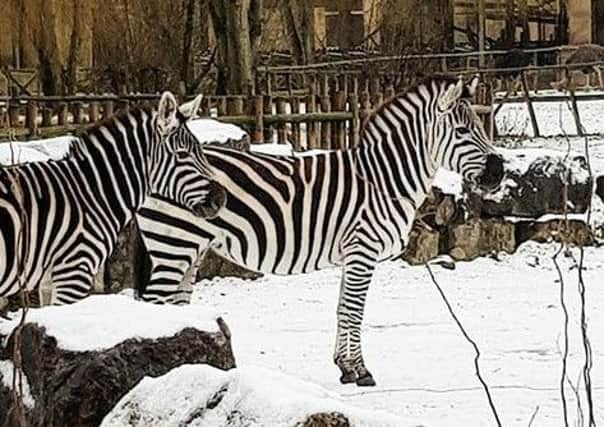View from the Zoo: Zebras co-habit very well with other animals


Our female zebra called Vendela, who is 10, and her partner, who is called Guinness and is 11, are both Grant’s zebras, the smallest subspecies of plains zebra.
In the wild they can be grazing on grassland and savannah woodland in countries such as Kenya, Tanzania and Zambia.
Advertisement
Hide AdAdvertisement
Hide AdGrant’s zebras have vertical stripes at the front, horizontal stripes on their back legs and diagonal stripes in between. Every zebra has a slightly different pattern, so their stripes can be used to identify individuals.
At Flamingo Land they share their home with some of our giraffes and ostriches. These animals all live in the same habitats in the wild so are quite happy to share an enclosure – in fact, it makes life more interesting for them.
Although zebras may remind you of a horse, they don’t neigh – instead they make a barking noise. They also communicate with facial expressions and body movements. Unlike other species of zebra, Grant’s zebras are not endangered. In fact, they are one of the most abundant grazing animals in Africa.
Wild zebras live in family groups, usually led by a dominant stallion. Zebra foals are able to stand up almost as soon as they are born and will start eating grass within a week. They are weaned at between seven and 11 months and will disperse from the group between one and three years old. Young males usually form bachelor groups until they are about four years old and able to compete for mates.
Advertisement
Hide AdAdvertisement
Hide AdPlains zebras are grazing animals, feeding on a variety of grasses. They can survive on coarse vegetation with very little nutritional value but they have to have daily access to drinking water.
Lions and hyenas will hunt zebras, which may bunch together in a herd if attacked, confusing the predator with their striped patterns. Alternatively, they may make a run for it, reaching speeds of up to 40mph. If all else fails, zebras will kick out with their sharp hooves and use their teeth to defend themselves.